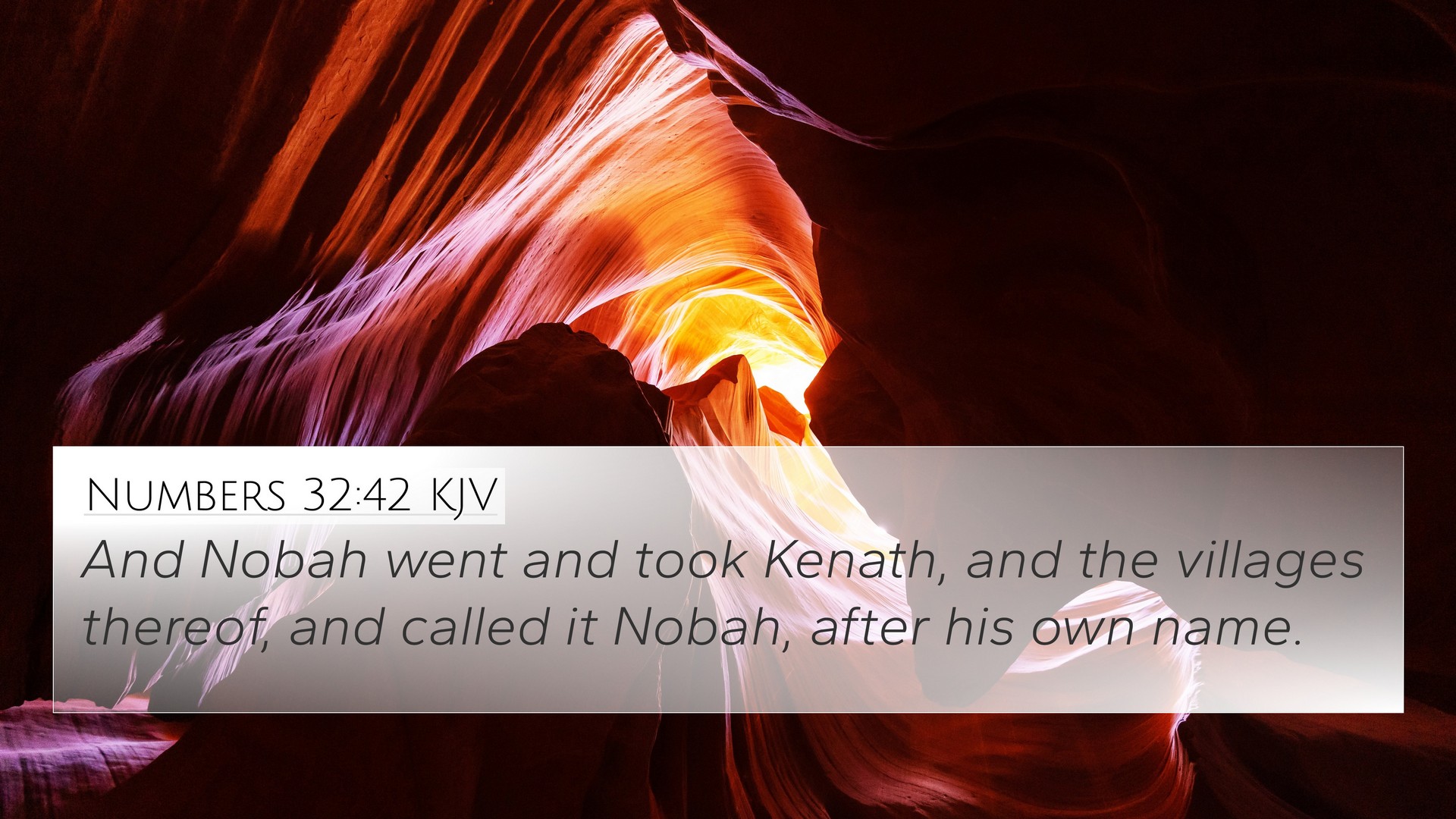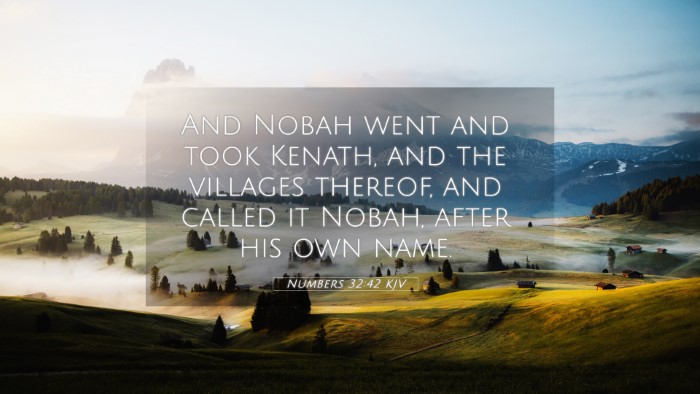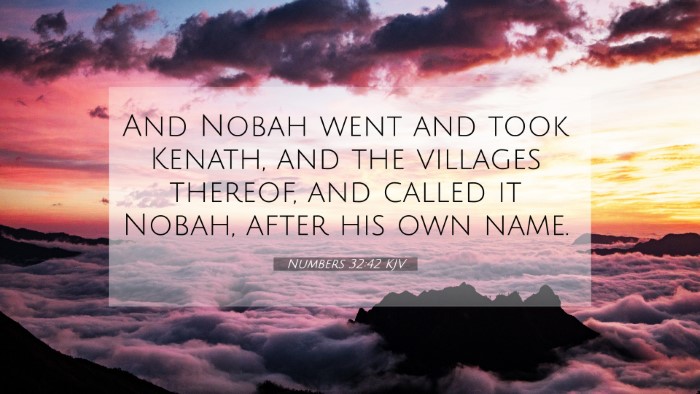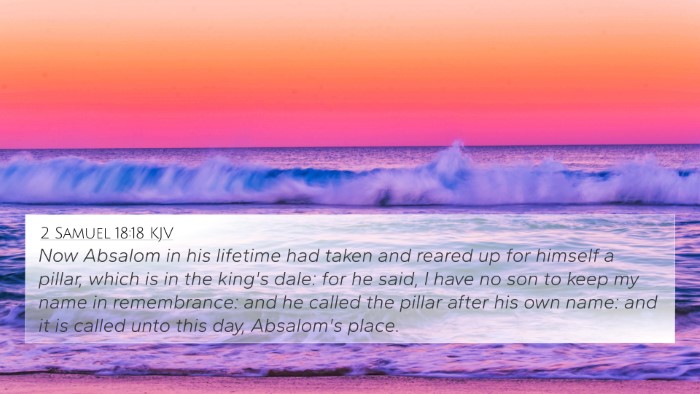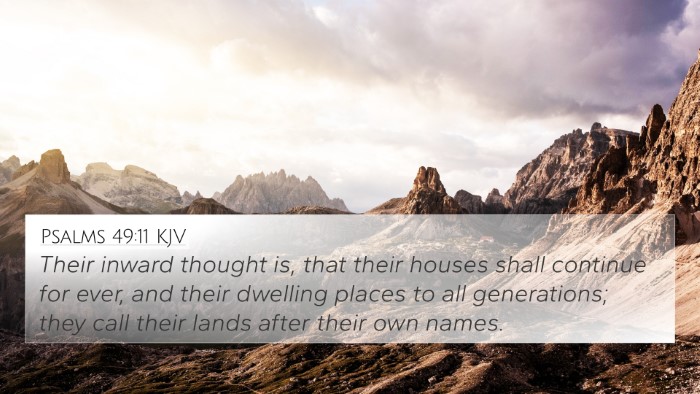Understanding Numbers 32:42
Numbers 32:42 states:
"And Moses gave Gilead unto Machir the son of Manasseh; and he dwelt therein."
This verse encapsulates the distribution of land among the tribes of Israel as they settled in the Promised Land. In this case, the land of Gilead is specifically given to Machir, the son of Manasseh, highlighting the fulfillment of God’s promise and the governance established through Moses. Below, we will explore insights derived from various public domain commentaries to better understand this significant biblical text.
Commentary Insights
Matthew Henry's Commentary
Matthew Henry emphasizes that the land given to Machir represents God's faithfulness in providing for His people. Machir's lineage is noted for their strength and valor, underscoring the idea that those who faithfully serve God are rewarded with blessings. This allocation signifies both divine promise and human legacy, demonstrating how God uses individuals and families in His redemptive narrative.
Albert Barnes' Notes on the Bible
Barnes highlights the historical context of this land grant during the Israelite’s wanderings. He suggests that Gilead was a militarily strategic area, and its possession by Machir's family provided stability for the eastern tribes. Furthermore, Barnes notes that this allocation showcases the tribal divisions that were pivotal in Israel’s societal structure. The passage, therefore, not only depicts land distribution but also God's sovereign placement of individuals within His covenant community.
Adam Clarke's Commentary
Adam Clarke points out that Machir’s inheritance was significant due to earlier passages in Scripture where Machir’s family showcased valor in preceding conflicts (see Joshua 17:1-3). Clarke also connects this act of land allocation to earlier themes of inheritance among the Israelites, highlighting God's adherence to His promises. He notes that Machir’s residence in Gileadfulfills both a prophetic tone and practical need in the establishment of Israelite territories.
Contextual Analysis
To fully grasp the implications of Numbers 32:42, it is essential to understand its context within the broader narrative of the Book of Numbers and the Pentateuch. This text serves not just as a record of land distribution but as a marker of fulfilling God's promises to the patriarchs, particularly to Joseph and his sons.
Cross-references with Numbers 32:42
- Joshua 17:1-6: Discusses the inheritance given to the tribe of Manasseh, including Machir's lineage.
- Deuteronomy 3:13-15: Indicates the lands assigned to the half-tribe of Manasseh and the significance of Gilead.
- Genesis 48:1-5: Explores the blessing given to Joseph and the importance of his sons in the Promised Land.
- Numbers 26:29-34: Lists the families of Manasseh and their respective lands, providing context for their inheritance.
- Genesis 50:23: References Joseph's descendants, anticipating their future settlements.
- Exodus 6:15: Gives a genealogy of the tribes, including Machir's ancestry, connecting back to Jacob’s sons.
- Joshua 12:4-6: Discusses the kings defeated in the land that is linked to Gilead.
Thematic Connections
This verse echoes themes of:
- Divine Providence: God's careful orchestration of land allocations reflects His justice and provision.
- Leadership: The role of Moses as God's servant guiding Israel through their challenges.
- Identity and Heritage: Highlighting how ancestral legacies play a role in faith communities.
- God’s Promises: The assurance that those who follow Him receive their due inheritance.
Cross-Referencing Biblical Texts
Understanding Numbers 32:42 can significantly benefit from using cross-referencing tools. These resources enable a more comprehensive study of scripture, helping individuals identify links and parallels between various portions of the Bible.
This verse, especially through its connections with others, fosters an understanding of the overarching narrative of God's covenant with Israel. For example, examining the discourse in Deuteronomy can provide additional insights into the significance of land promises and their fulfillment in historical context.
How to Cross-Reference in the Bible
To effectively use cross-references, consider the following methods:
- Utilizing a Bible Concordance to find keywords and corresponding verses.
- Employing a Bible Cross Reference Guide found in study Bibles to trace themes back and forth.
- Incorporating cross-reference studies during personal Bible reading or group discussions.
Conclusion
Numbers 32:42 is rich with theological meaning and serves as a crucial part of the narrative surrounding the Israelites' journey to the Promised Land. The insights from renowned commentaries, combined with a thoughtful exploration of cross-references, allow for a deeper understanding of God's unfolding story through Israel's history. As believers, engaging with these textual connections can enhance our spiritual growth and appreciation of Scripture.
